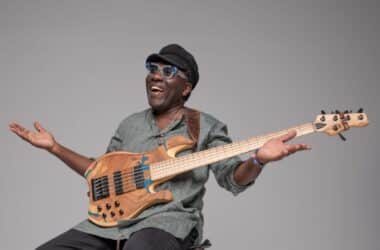Bruno Richard Hauptmann’s mug shot. The wooden electric chair where he was put to death. A sponge like the one that was dampened with salt water and placed on his head to conduct the deadly jolts of electricity.
This grim assortment of relics is housed in a small museum in New Jersey, about 20 miles away from where the decaying body of Charles A. Lindbergh Jr., the toddler Hauptmann was convicted of kidnapping and killing, was discovered face down in the dirt.
Nearly 100 years ago, the Lindbergh case was known as the crime of the century by virtue of its cinematic details and the boy’s high-profile parents, Anne Morrow Lindbergh, a diplomat’s daughter, and Charles A. Lindbergh, an aviator who had catapulted to fame by completing the world’s first nonstop solo flight from New York to Paris.
In the decades since, as the keepers of the Lindbergh kidnapping archives can attest, public interest in the case has never subsided — nor has skepticism about Hauptmann’s guilt. But a bizarre and grisly new theory about Lindbergh’s potential involvement in his son’s death, and renewed legal pressure to force DNA testing of evidence, have combined to thrust one of the country’s most enduring murder mysteries squarely back into public consciousness.
Hauptmann, a German immigrant who had worked as a carpenter and lived in the Bronx, was executed for the crime in April 1936. His great-great niece, Cezanne Love, and her aunt recently provided DNA samples in the hope that New Jersey’s courts would decide to clear the way for modern science to explore century-old doubts: Was an innocent man put to death? And, if not, did he act alone?
“I personally don’t think he did it,” Ms. Love said, noting that Hauptmann and his widow maintained his innocence, and his alibi, until the end. But if the evidence does link him to the case, “then so be it,” she said. “I want to uncover the truth.”
Charles Lindbergh Jr. was 20 months old when he disappeared from his bedroom in East Amwell, N.J., on March 1, 1932. A wooden ladder, a chisel and the first of more than a dozen ransom notes were found at the house after the kidnapping. The family arranged for a $50,000 payment, but the child was discovered dead 10 weeks later.
The investigation, led by the New Jersey State Police and splashed across front pages worldwide, raged on until September 1934, when a $10 gold certificate from the ransom payment was used to buy gasoline in New York.
Investigators traced the car at the gas station to Hauptmann and later discovered $13,760 in ransom bills in his garage — money he said he’d been asked to hold for a man who died in Germany before the trial.
There were no fingerprints, and there was no confession and no explanation for how a solitary kidnapper might have orchestrated a toddler’s abduction from a second-floor nursery on a rainy Tuesday evening, while five adults and a dog were in the home. Hauptmann was convicted after a six-week trial in Flemington, N.J., and sentenced to death.
At the time of the boy’s kidnapping his father was a national hero.
But history would come to view the renowned pilot who died 50 years ago far more critically. Lindbergh was fascinated with the study of eugenics and was vilified by the media after accepting a medal for his contributions to aviation from Hermann Goering on behalf of Hitler in 1938 — seen by many as a sign of his sympathies with the Nazi regime.
Lise Pearlman, a retired California judge, now speculates that Lindbergh was capable of something even more sinister: sacrificing his son for scientific experiments that led to the child’s death.
“I take advantage of the distance in time to treat the boy’s father as a potential suspect in his kidnap and murder; like all the others on the list, a fallible human being, not a demigod,” Ms. Pearlman wrote in a 2020 book, “The Lindbergh Kidnapping Suspect No. 1: The Man Who Got Away.”
It is a theory that other Lindbergh researchers view with deep skepticism.
Ms. Pearlman acknowledged that her findings were based on circumstantial, yet compelling, evidence about the crime scene, the condition of the boy’s remains and the research that Lindbergh was conducting at the time with Dr. Alexis Carrel, a Nobel Prize-winning surgeon and organ transplant pioneer.
Last February, she shared her theory at a conference held by the American Academy of Forensic Sciences, broadening the reach of her views and stoking renewed debate about the crime’s persistent riddles.
Writers who have researched the case just as extensively as Ms. Pearlman said it would be impossible to definitively prove a whole new theory 100 years later. But that has not stopped people from trying.
A former Rutgers University professor, Lloyd C. Gardner, founded a social group decades ago that called itself the State Street Irregulars, a homage to Arthur Conan Doyle’s Sherlock Holmes series. The group met at the bar of a restaurant in Lambertville, N.J., while Professor Gardner was writing his book on the subject, “The Case That Never Dies.”
“It will never be proven one way or another,” Professor Gardner said.
Push for DNA tests
Barry Scheck, a founder of the Innocence Project, which has represented roughly 200 clients exonerated by DNA evidence, was a classmate of Ms. Pearlman’s in college and in law school and wrote a supportive blurb for her book. The Innocence Project has not taken on the case, but Mr. Scheck said he had provided consultation to Ms. Pearlman.
In an interview, Mr. Scheck said his interest in the Lindbergh case was tied more to the possibility that an innocent man was executed than the identity of a culprit.
“If there is a DNA test that you can do that will shed light on the guilt or the innocence of somebody, particularly someone who was executed, I think the family has the right to get that information,” he said.
His sentiment is in line with many people’s lasting interest in the case and follows renewed efforts to determine Hauptmann’s guilt or innocence.
Lawrence S. Lustberg, a prominent criminal defense lawyer in New Jersey, said Monday that he had joined the effort on behalf of “opponents of wrongful conviction.” He said he was “carefully considering what procedural mechanisms” might be available to “redress what appears to be a terrible, historic injustice.”
There is already an unrelated legal challenge in New Jersey over a request to test the saliva on the stamped ransom envelopes for clues. Researchers have also argued that the ladder and a wooden board found in Hauptmann’s attic should be evaluated using modern methods to confirm that they match.
A Superior Court judge ruled last year against releasing the envelopes for DNA testing, and an appeals panel is expected to set a date to hear arguments on the matter in the coming months.
Kurt Perhach, who has cited the state’s open public records laws in his fight to win access to the envelopes, traces his career as a lawyer to a teenage fascination with the Lindbergh kidnapping case.
“I have felt compelled that there’s something wrong here since I was a boy,” said Mr. Perhach, 46, who grew up about 30 minutes away from the Lindberghs’ farmhouse in East Amwell. He represents a group of people, including Wayne McDaniel, a New York City-based filmmaker, hoping to use information gleaned from testing to explore a new documentary angle within the already well-plumbed Lindbergh oeuvre.
The New Jersey attorney general’s office has opposed the request, arguing that the “integrity of the historical items outweighs any interest in conducting DNA testing that will permanently alter and potentially damage the items.”
A trove of records
In 1981, a former governor of New Jersey, Brendan Byrne, issued an executive order that made all records pertaining to the Lindbergh investigation available to the public for research.
That material — roughly 225,000 documents — is housed in a large room adjacent to the Lindbergh museum gallery at the State Police’s headquarters near Trenton, N.J., and overseen by a full-time archivist, Greg Ferrara.
Visitors are free to open filing cabinets and leaf through original crime-scene photos, the trial transcript, index cards bearing names of potential witnesses, police reports and Hauptmann’s account of his life, which was typed onto translucent paper so brittle it crinkles when handled.
“Much has been said in the newspapers about my life to make me appear as a black sheep,” he wrote. “Why don’t they investigate the true course of events?”
Since then, few cases have generated more independent investigation.
Sleuths, some of them admittedly obsessed by the case, still flock to online discussion boards to trade hypotheses. The kidnapping has inspired dozens of researched books, movies, documentaries and even musicals.
“I got four calls this week,” Mr. Ferrara said, describing the level of continuing public interest.
Professor Gardner, 89, said he once suggested adding a sign above the New Jersey archive.
“Abandon all hope ye who enter here,” he said, borrowing a passage from Dante’s “Divine Comedy.”
“You get into this and you can’t get out,” he said. “It’s so intriguing.”
Del Quentin Wilber heard the same Dante line as he researched a book he is writing about the case for Simon & Schuster.
Mr. Wilber, the Washington investigations editor for The Associated Press, said he had mined hundreds of thousands of records held at the U.S. Treasury Department, the Federal Bureau of Investigation, the New Jersey archives and several universities.
“It’s still the ultimate American spectacle that draws people to it in this obsessive way,” said Mr. Wilber, who is convinced of Hauptmann’s guilt despite trial flaws that have opened the case to unceasing scrutiny.
“They railroaded a guilty man,” he said.
‘Complicated, flawed men’
One of the most grotesque theories to emerge since the boy’s death is detailed in the book by the retired judge in California.
Ms. Pearlman said she considered the apparent absence of blood in the woods where the body was discovered a smoking gun that proved the boy died somewhere else. Unexplored questions about the condition of the body and items found nearby have led her to speculate that Lindbergh colluded with Dr. Carrel, his friend who worked at the Rockefeller Institute for Medical Research in New York City, to experiment on his son.
She wrote that the boy, who had an unusually large head and took medicines associated with rickets, would have been seen as expendable to the men, who, as eugenicists, believed in improving the genetic quality of the population. She has concluded that there was a “horrendous probability” that the men removed his organs in hope of achieving a medical breakthrough that might help Lindbergh’s sister-in-law, who had a damaged heart valve.
To reach this conclusion, Ms. Pearlman worked with a New Jersey pathologist, Dr. Peter Speth, who evaluated records from the crime scene and autopsy, which showed that all the boy’s organs other than the heart and liver were missing. At the time, investigators deduced that foraging animals had mutilated the body as it lay in the woods.
Dr. Speth said the apparent absence of vermin on the boy’s remains — and clues suggesting the child’s face and one of his feet decayed more slowly than other parts of the body — indicated that the body had been dumped in the woods well after the abduction and that chemicals commonly found in laboratories had also probably been used.
“Bruno could not have conceived of it and could not have carried it out,” Dr. Speth said in an interview. He called Hauptmann’s execution “a terrible miscarriage of justice.”
The Academy of Forensic Sciences routinely includes disclaimers noting that the research presented at its conferences is unverified, and Ms. Pearlman’s findings have not been subject to peer review. But a screening team would have had to approve Ms. Pearlman’s participation in the conference, and the academy published an abstract summarizing her findings, as is routine, Jeri Ropero-Miller, a scientist and member of the academy, said.
Still, authors who have also studied the crime and its characters extensively question Ms. Pearlman’s book and its extreme conclusions.
David M. Friedman, who wrote “The Immortalists: Charles Lindbergh, Dr. Alexis Carrel and Their Daring Quest to Live Forever,” said he had not read Ms. Pearlman’s book but found the theory about Lindbergh and Carrel absurd.
“They were complicated, flawed men,” Mr. Friedman said. “But the idea that they would collaborate in an act of infanticide strikes me as malicious garbage.”
Ms. Love, Hauptmann’s relative, said she remained focused less on the whodunit than on helping to wipe away a stain that had haunted her family for nearly a century.
Her goal, she said, was to expose the limits of science and justice in the 1930s.
“With the hysteria and the horribleness of the crime, the police wanted to put a nice little bow,” she said.
“But in today’s court system it would have been a totally different outcome.”
Source link








